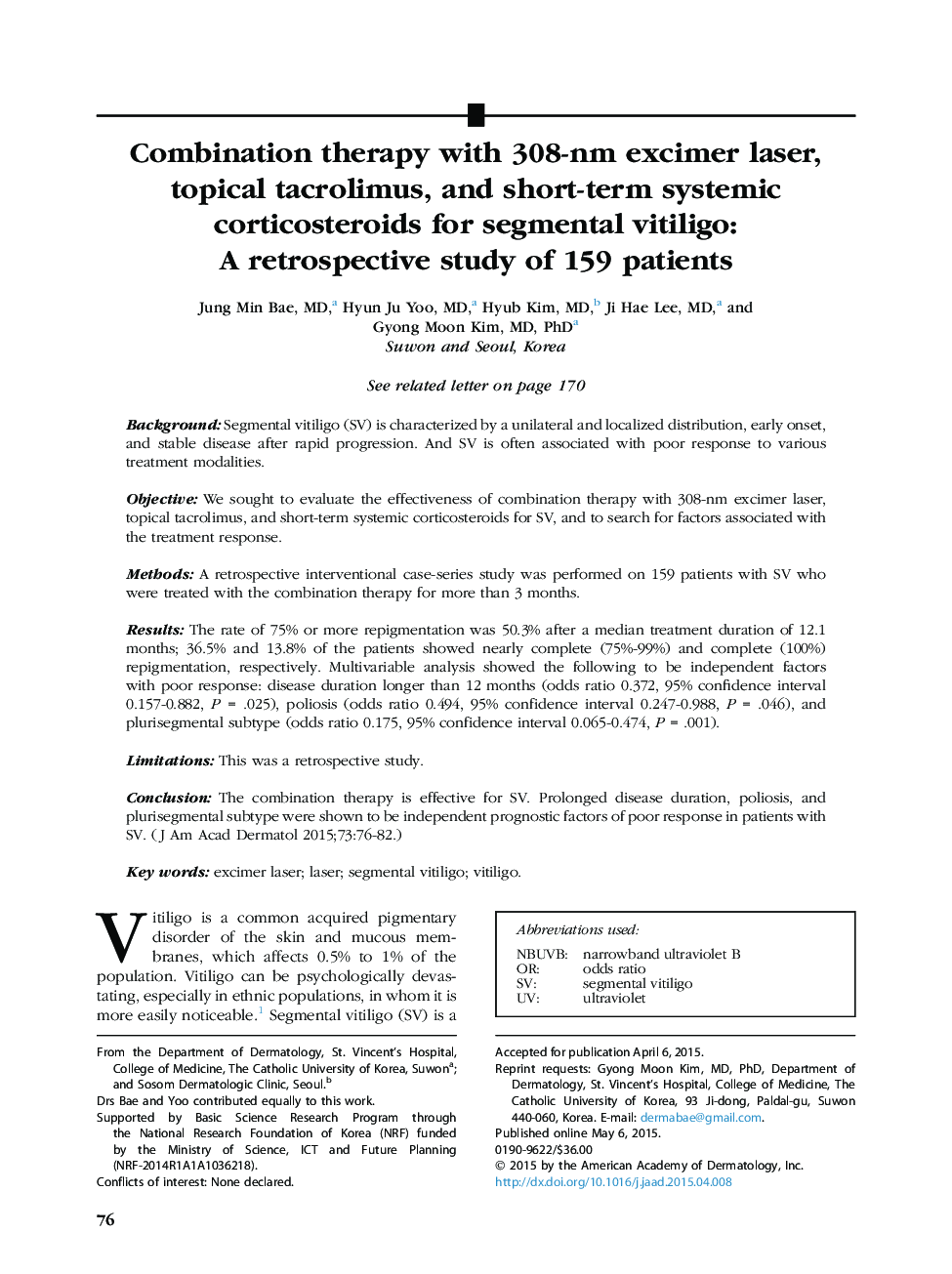| Article ID | Journal | Published Year | Pages | File Type |
|---|---|---|---|---|
| 6071447 | Journal of the American Academy of Dermatology | 2015 | 7 Pages |
BackgroundSegmental vitiligo (SV) is characterized by a unilateral and localized distribution, early onset, and stable disease after rapid progression. And SV is often associated with poor response to various treatment modalities.ObjectiveWe sought to evaluate the effectiveness of combination therapy with 308-nm excimer laser, topical tacrolimus, and short-term systemic corticosteroids for SV, and to search for factors associated with the treatment response.MethodsA retrospective interventional case-series study was performed on 159 patients with SV who were treated with the combination therapy for more than 3 months.ResultsThe rate of 75% or more repigmentation was 50.3% after a median treatment duration of 12.1 months; 36.5% and 13.8% of the patients showed nearly complete (75%-99%) and complete (100%) repigmentation, respectively. Multivariable analysis showed the following to be independent factors with poor response: disease duration longer than 12 months (odds ratio 0.372, 95% confidence interval 0.157-0.882, P = .025), poliosis (odds ratio 0.494, 95% confidence interval 0.247-0.988, P = .046), and plurisegmental subtype (odds ratio 0.175, 95% confidence interval 0.065-0.474, P = .001).LimitationsThis was a retrospective study.ConclusionThe combination therapy is effective for SV. Prolonged disease duration, poliosis, and plurisegmental subtype were shown to be independent prognostic factors of poor response in patients with SV.
